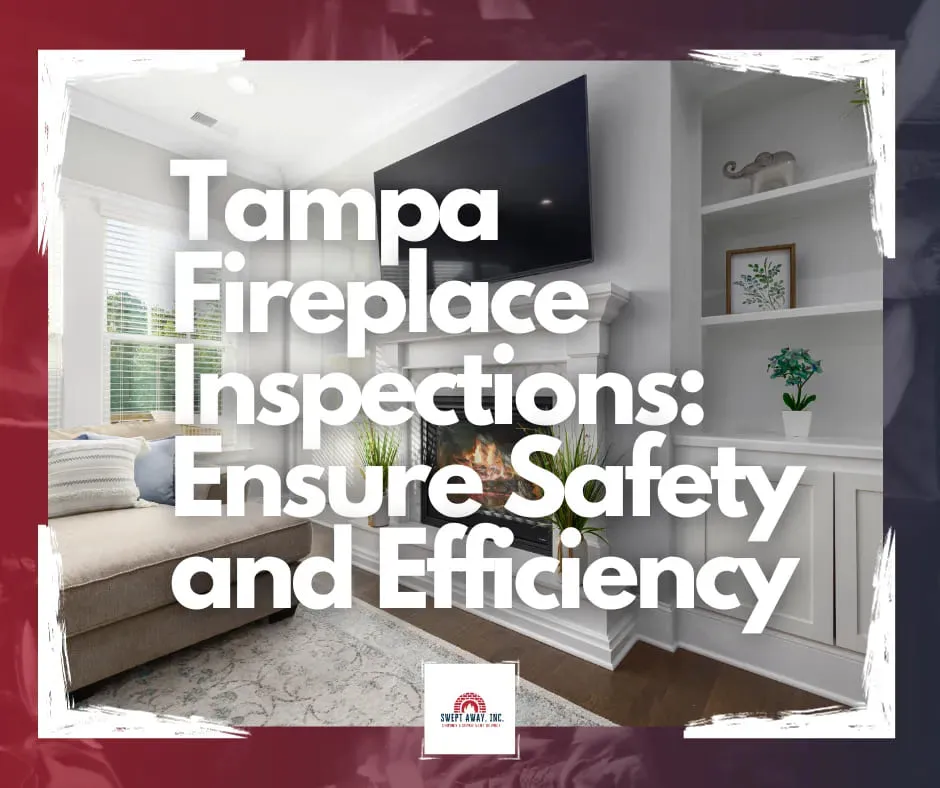Fireplaces add warmth and charm to any home, making them a cherished feature for many Tampa residents. However, to ensure the safety and efficiency of your fireplace, regular inspections are vital. In this blog post, we will explore the importance of Tampa fireplace inspections, what to expect during the process, and how it can enhance your home’s safety and energy efficiency.
Why Fireplace Inspections Matter
Safety First
Safety is paramount when it comes to fireplaces. Tampa residents know the value of a cozy fire on a chilly evening, but without proper maintenance and inspections, fire hazards can pose a significant risk. Cracks, creosote buildup, and damaged flues are just a few of the potential issues that can arise. Regular inspections help identify these problems early, preventing potential disasters.
Energy Efficiency
Beyond safety, fireplace inspections can significantly impact the energy efficiency of your home. A properly functioning fireplace can actually help you reduce your heating costs. When the fireplace works efficiently, it provides supplemental heat, reducing the load on your HVAC system. This translates to lower energy bills and a reduced carbon footprint.
The Tampa Fireplace Inspection Process
Fireplace inspections are typically performed by certified professionals who follow a standardized procedure. Here’s what you can expect during a Tampa fireplace inspection:
Visual Inspection
The process begins with a visual inspection of the exterior and interior of the fireplace and chimney. This step helps identify any obvious signs of damage or deterioration.
Creosote Removal
Creosote is a flammable substance that can accumulate in the chimney. During the inspection, a professional will assess the creosote buildup and remove it if necessary. This step is crucial for preventing chimney fires.
Structural Assessment
Inspectors will assess the structural integrity of the fireplace and chimney. Cracks, gaps, and any other damage that could affect safety will be noted.
Flue Examination
A thorough examination of the flue ensures that it’s clear of obstructions. Blockages can lead to poor airflow, affecting the fireplace’s performance.
Damper Functionality
The damper controls airflow in the chimney. Inspectors will check if it opens and closes correctly, as this has a direct impact on the fireplace’s efficiency.
FAQs About Tampa Fireplace Inspections
Q1: How often should I get my fireplace inspected?
A1: It’s recommended to have your fireplace inspected at least once a year, preferably before the cold season begins.
Q2: Can I inspect my fireplace myself?
A2: While you can perform basic visual checks, a professional inspection is essential for a comprehensive assessment and addressing potential safety hazards.
Q3: Are fireplace inspections expensive?
A3: The cost of a fireplace inspection can vary, but it’s a small investment compared to the potential risks and savings on energy bills.
Conclusion
Tampa fireplace inspections are a fundamental aspect of maintaining a safe and efficient home. By prioritizing regular inspections, you can enjoy the comfort and ambiance of your fireplace while keeping your family safe and reducing your energy bills. Don’t wait until the next cold season; schedule your fireplace inspection today for peace of mind and savings in the long run.

